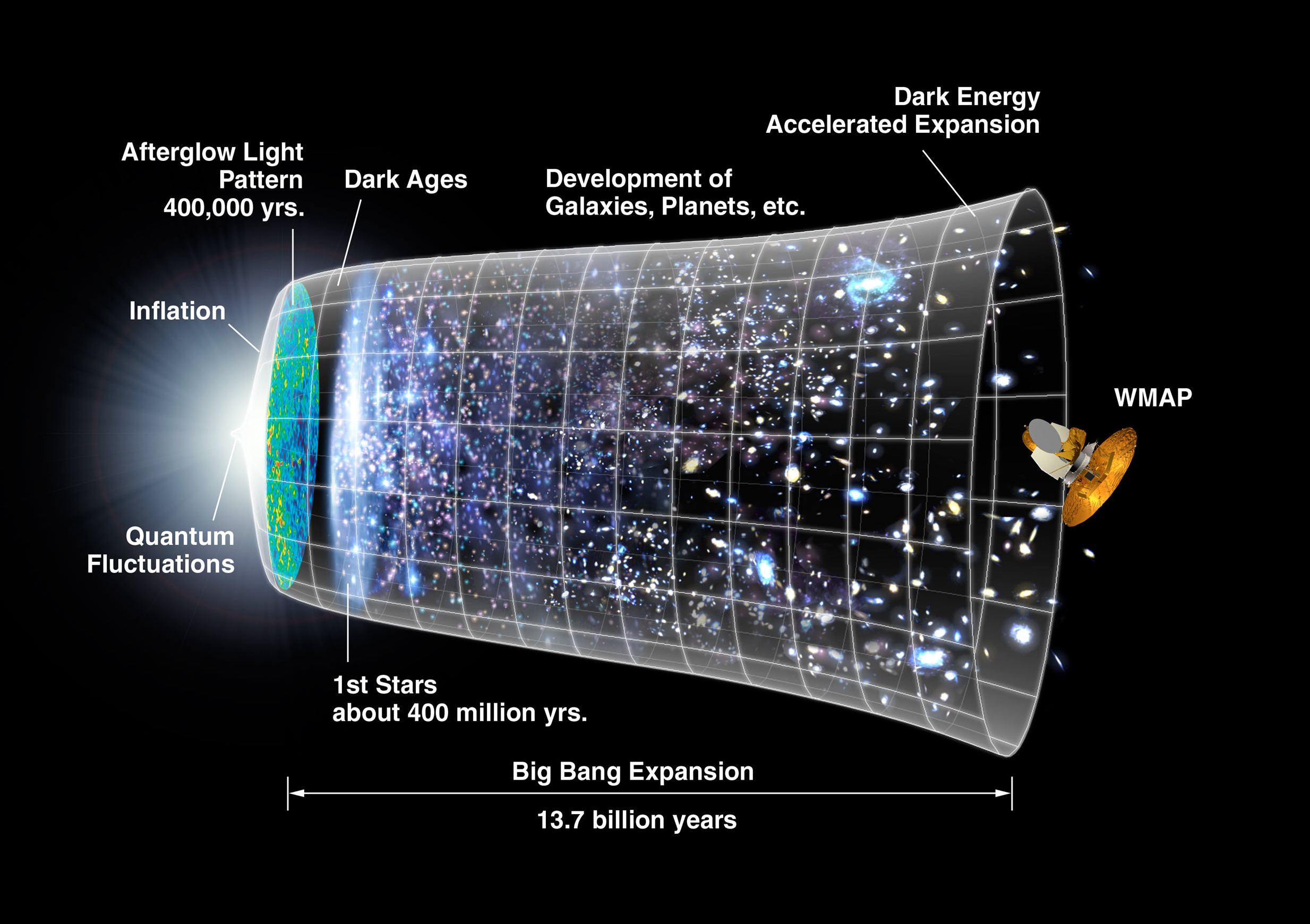In this series we are exploring the weird and wonderful world of astronomy jargon! You’ll be off to a good start with today’s topic: the big bang theory!
The Big Bang theory is the current best understanding of the history of the Universe. The theory is a physical model, based on many lines of evidence, that says that our Universe was once smaller, hotter, and denser than it is today. In fact, according to our best measurements, about 13.77 billion years ago our entire observable Universe – including every star and galaxy that we could ever see – was once crammed into a tiny volume only a few centimeters across with a temperature of over a quadrillion degrees.
The Big Bang theory originated in the early 20th century. The first hints of the theory began with Einstein’s general theory of relativity. When he applied his equations to the study of the whole Universe, he found that a static, unchanging cosmos was highly unusual. Instead, the Universe should be either expanding or contracting. The Belgian astronomer and Catholic priest Georges Lemaître came to a similar conclusion, calling his idea of the origins of the Universe the “primeval atom.”
Scientists, including Einstein, rejected this idea. But in the 1920’s astronomer Edwin Hubble conclusively demonstrated that all galaxies are, on average, racing away from each other. The simplest explanation of this observation is that we live in an expanding Universe.
Since then, multiple lines of evidence have led scientists to conclude that the Big Bang theory is accurate. For example, models of the very early Universe successfully predict the abundance of light elements like hydrogen and helium. Early cosmologists also predicted the existence of an afterglow light pattern generated when the young Universe transitioned from a plasma to neutral state. This pattern, called the cosmic microwave background, was discovered on accident in the 1960’s.
In the Big Bang model, the primordial Universe expanded and cooled, eventually giving rise to the formation of stars and galaxies.
Today, no other theory of cosmology can successfully explain the wealth of evidence.

